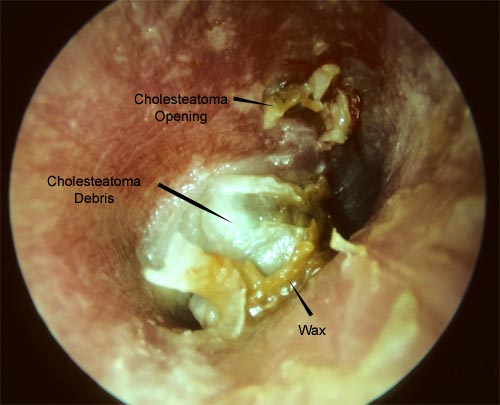This can cause part of the eardrum to be drawn into the middle ear, forming a cyst that can turn into cholesteatoma. After that, the growth grows as follows Symptoms / Complications / Treatment / Prospects
How do you know if you have cholesteatoma?
What are the symptoms of cholesteatoma? 1 Hearing loss. 2 Otorhinolaryngology, often accompanied by a foul odor. 3 Recurrent ear closure. 4 Feeling of closed ears. 5 dizziness. 6 Facial weakness on the sides of the infected ear. 7 Ear pain / pain. Cholesteatoma. -Otorhinolaryngology Health
What is one of the most common symptoms of cholesteatoma?
Cholesteatoma usually affects only one ear. The two most common symptoms are persistent or recurrent watery, often odorous, ear secretions. This may come and go, or it may continue. Hearing in the affected ear is gradually lost.
Can you see cholesteatoma?
Cholesteatoma is primarily a visible diagnosis and providers need to develop otoscopy skills to visualize middle ear cholesteatoma. A microscope may also help. A collection of white keratin debris is common in the posterior upper eardrum quadrant.
What is the best treatment for cholesteatoma?
Surgery is rarely urgent, but if cholesteatoma is found, surgical treatment is the only option. Surgery usually involves mastoidectomy to remove the disease from the bone and tympanoplasty to repair the eardrum.

Below you will find two helpful answers on a similar topic. 👇
What foods can cause high blood pressure in dogs?Why did Picasso paint Child with a Dove?
